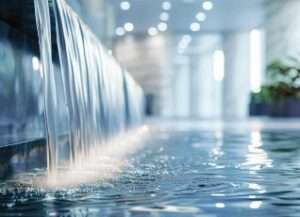Legionella is a waterborne pathogen that contaminates nearly half of all building water systems. It typically enters through the municipal cold water supply and thrives in areas of the water system with sediment accumulation, stagnant water, warm temperatures, or where other microbes are present. While hot water is often seen as the biggest risk for Legionella growth, cold water systems can also harbor the bacteria, making it a hidden threat in many buildings.
Legionella in hot water systems
Potable hot water systems, particularly untreated ones, can act as major reservoirs for Legionella growth. The most suitable temperature for Legionella growth is between 90°F and 120°F, making hot water systems a high-risk environment for Legionella.
Legionella in cold water systems
Legionella species in cold water
Several types of Legionella can survive and grow in low temperatures, including Legionella pneumophila, the species responsible for most cases of Legionnaires’ disease in the United States. This strain prefers higher cold water temperatures, while other species like Legionella anisa and Legionella longbeachae tend to survive in colder environments. Although these non-pneumophila species are less likely to cause illness, they’ve been linked to outbreaks of Pontiac Fever.
Controlling Legionella in cold water
Effectively controlling Legionella in cold water systems requires a strategic approach that combines proven methods. The right solution will depend on factors like the level of contamination, the building’s location, and the vulnerability of its occupants, but a combination of the below water treatment technologies is typically recommended.
- Copper-silver ionization: This eco-friendly disinfectant is highly effective in both hot and cold water systems. Cold water treatment is preferred if the building is experiencing significant cold water Legionella positivity, in warmer regions with elevated water temperatures, or where there’s substantial heat transfer between hot and cold water pipes.
- UV disinfection: Installing UV disinfection on the incoming cold water supply reduces Legionella levels entering the building. In most cases, UV disinfection should be paired with copper-silver ionization. The UV system stops new Legionella from entering and “reseeding” the water system, while copper-silver ionization provides ongoing disinfection throughout the building.
- Sediment filtration: Sediment in building water systems promotes bacterial growth by providing nutrients and shelter. Installing sediment filtration on the incoming cold water supply reduces the amount of sediment entering the system, lowering bacterial risk and offering protection from external issues like water main breaks or construction. It also enhances the effectiveness of copper-silver ionization and UV disinfection by preventing disinfectants from being consumed by sediment, leaving more disinfectant available to target and kill bacteria.
By combining these solutions, you can significantly reduce the risk of Legionella in cold water systems. Copper-silver ionization, UV disinfection, and sediment filtration together offer a complete and proactive approach to creating safer and healthier environments in buildings.


